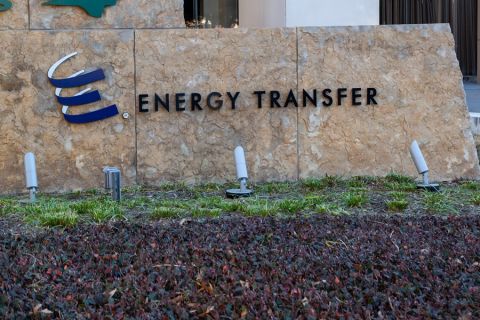
Machine learning-based rock-type classification uses seismic data and facies logs to predict facies volumes and their probability of occurrence to improve reservoir characterization. (Image courtesy of Paradigm)
The E&P industry is undergoing a transformation similar to what the television industry went through a few years ago in its switch to high definition. During that transition there was a period during which television broadcasters were transmitting signals in high definition, but most homes still had standard-definition televisions, so the extra resolution was lost.
That’s where the E&P industry stands today. High-definition seismic and well log data are ubiquitous. But organizations that have spent money to acquire data still lack the tools to extract the deeper levels of information now available. Paradigm’s vision is to create the first high-definition software platform to ensure that operators’ investments in data acquisition can be leveraged for their drilling, completion and production decisions. To deliver on this, the company has added more innovation, integration and interconnectivity to its latest release, Paradigm 17.
Designed to enhance productivity, Paradigm 17 enables users to work within a truly integrated ecosystem for everything from seismic imaging to seismic and geologic interpretation, well log analysis, and subsurface modeling.
For seismic processors and imagers, an enhanced multi-2-D line framework, including an innovative implementation of new 2-D multiline tomography, maximizes productivity and minimizes manual intervention. Other new processing and imaging features include a method for production-oriented estimation of effective attenuation from seismic data in the Echos seismic processing application and new capabilities in refraction statics and trace interpolation. In EarthStudy 360 diffraction/specular imaging improvements based on new post-processing of directional angle gathers help minimize guesswork for interpreters.
Application and infrastructure enhancements have been introduced to the SeisEarth interpretation system, consolidating its core interpretation windows into a single application. The result is improved cross-product integration, faster work and fewer button clicks. Waveform classification based on the Stratimagic neural network approach has been integrated into SeisEarth together with a new machine learning-based rock-type classification plug-in. The rock-type classification uses seismic data and facies logs to predict facies volumes and their probability of occurrence to improve reservoir characterization.
A new tool and more options to blend multiples volumes were added to VoxelGeo to improve multivolume visualization and interpretation, including multivolume rendering in GPU. A new workflow to calculate pore pressure from seismic velocities was added to the seismic attributes package.
New and enhanced quantitative seismic interpretation (QSI) capabilities have been incorporated into the seismic interpretation process, expanding this solution to both Windows and Linux users. Improvements made to the QSI crossplot utility and to wedge/2-D forward modeling enable more effective workflows and a better understanding of the seismic response.
The Paradigm 17 package includes Geolog 8, the latest version of Paradigm’s formation evaluation suite. Geolog 8 offers new petrophysics features including Monte Carlo uncertainty analysis for optimizing multimineral and fluid-log analysis. This enables organizations to more accurately characterize formations at the well bore and extends the existing capability to conduct uncertainty analysis deterministically. A new 3-D petrophysics feature allows accurate analysis of logs in high-angle and horizontal wells. The release also includes a new processing method for slowness frequency analysis of full waveform sonic logs, improved image log processing and new production log analysis tools. These techniques take on increasing importance as organizations continue to produce from ever thinner beds, needing higher-resolution analysis.
3-D structural model-based tomography has been added to support geologically constrained velocity models and enable complete synchronization between velocity model updates (GeoDepth) and the geologic model (SKUA-GOCAD).
This release also expands the reservoir geomechanics capabilities in the SKUA-GOCAD modeling solution, including new tools for building geomechanical mesh and directly exporting structured and unstructured grids to Dassault Systèmes Abaqus.
Finally, Paradigm 17 continues to increase interconnection between Paradigm and other platforms through expanded connectivity with Schlumberger Petrel, improved seismic data and ASCII import/export and a new interface for batch loading data from OpenWorks and GeoFrame. Paradigm 17 also provides Geolog users with direct access to code written in Matlab, allowing them to easily integrate their custom algorithms into Geolog.
Recommended Reading
Report: Crescent Midstream Exploring $1.3B Sale
2024-04-23 - Sources say another company is considering $1.3B acquisition for Crescent Midstream’s facilities and pipelines focused on Louisiana and the Gulf of Mexico.
Energy Transfer Announces Cash Distribution on Series I Units
2024-04-22 - Energy Transfer’s distribution will be payable May 15 to Series I unitholders of record by May 1.
Balticconnector Gas Pipeline Back in Operation After Damage
2024-04-22 - The Balticconnector subsea gas link between Estonia and Finland was severely damaged in October, hurting energy security and raising alarm bells in the wider region.
Wayangankar: Golden Era for US Natural Gas Storage – Version 2.0
2024-04-19 - While the current resurgence in gas storage is reminiscent of the 2000s —an era that saw ~400 Bcf of storage capacity additions — the market drivers providing the tailwinds today are drastically different from that cycle.



